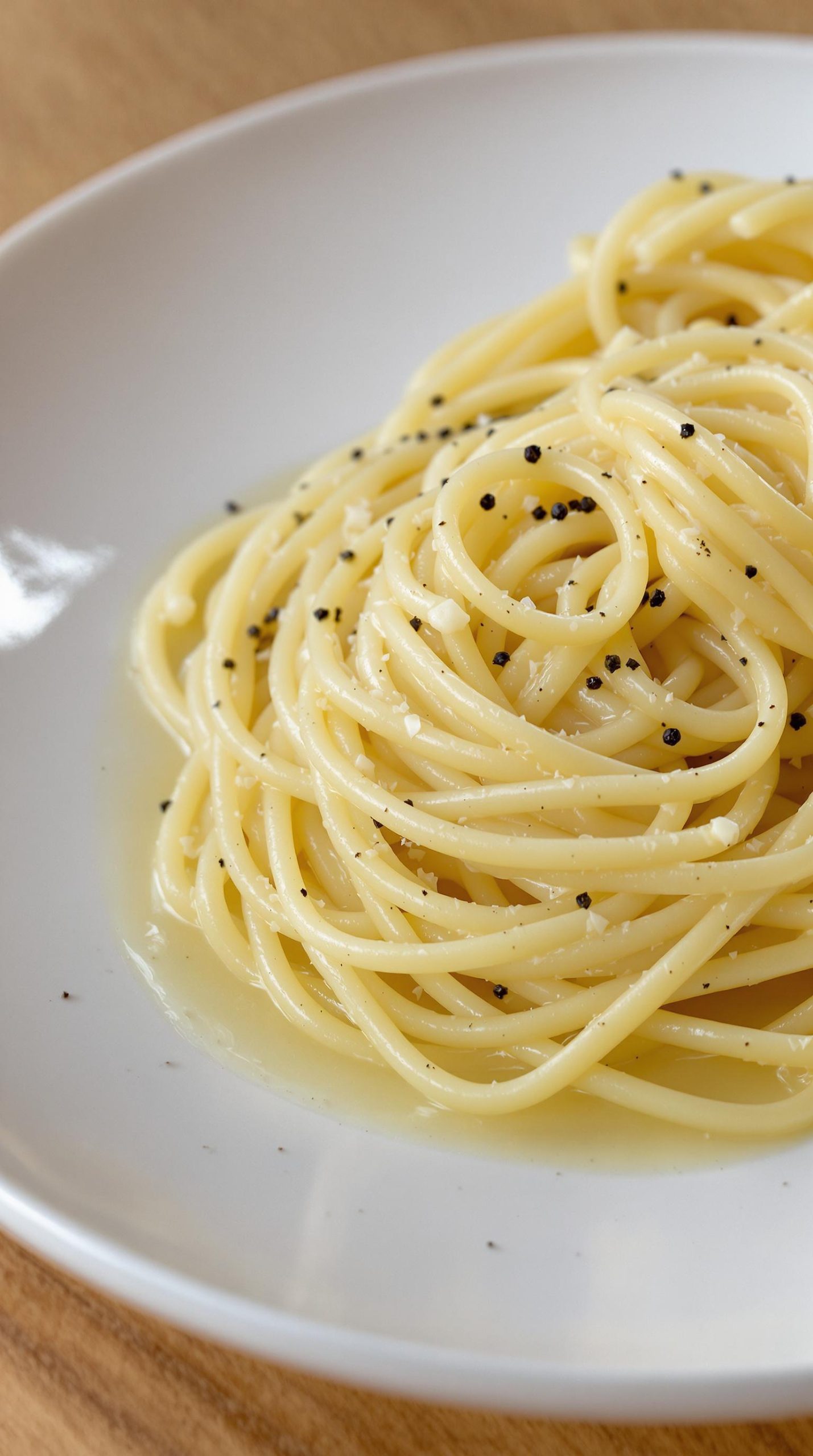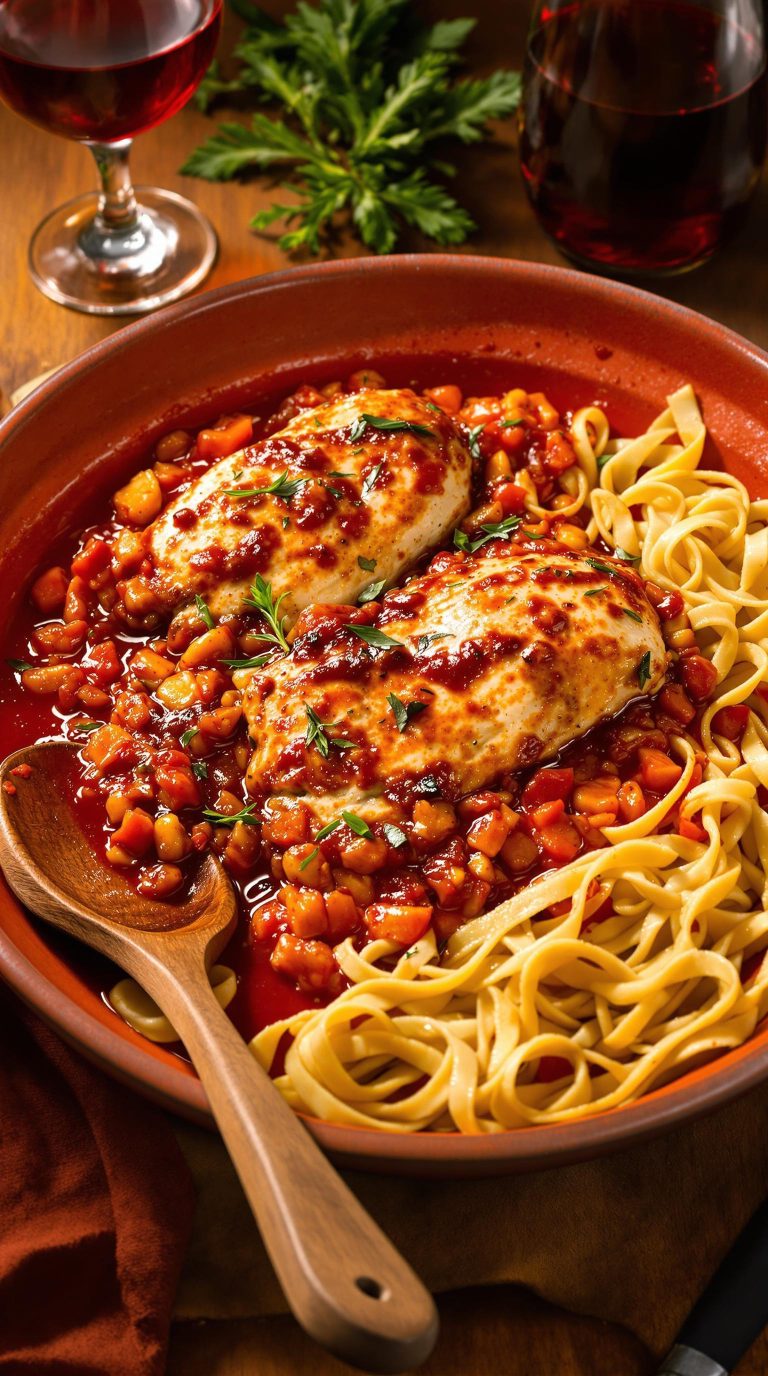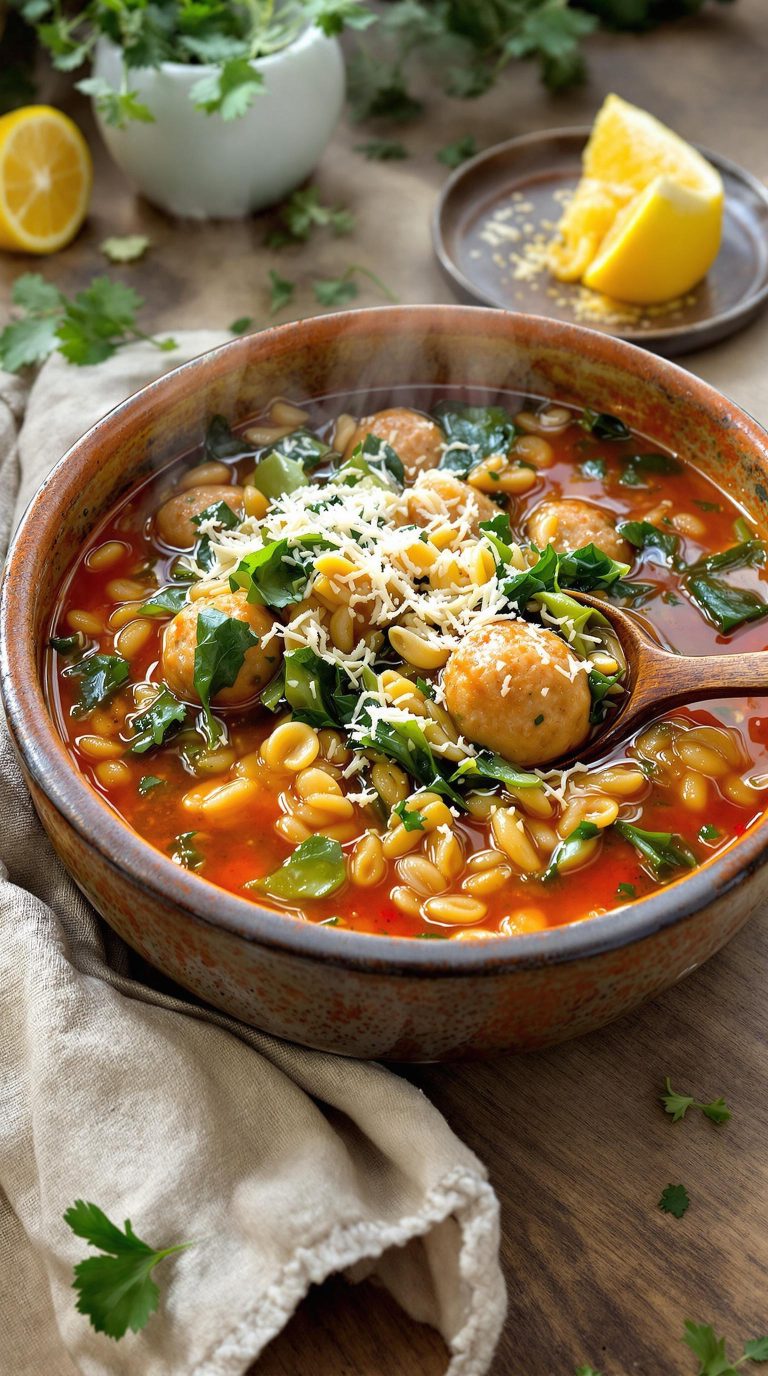Why You’ll Love this Authentic Cacio e Pepe
Simplicity at its finest is what makes this authentic Cacio e Pepe irresistible.
I’m talking about a dish with just a handful of ingredients that creates something truly magical on your plate.
You’ll adore how the creamy, peppery sauce clings to each strand of pasta, delivering that perfect balance of sharp pecorino and warming black pepper.
Can anything be more satisfying than twirling your fork through those glossy strands?
The beauty lies in its rustic Roman roots—a humble dish elevated to culinary perfection.
And honestly, when dinner’s this quick to prepare yet tastes this sophisticated, why would you need anything more?
What Ingredients are in Authentic Cacio e Pepe?
The magic of authentic Cacio e Pepe lies in its simplicity and perfect balance of flavors. This iconic Roman pasta dish translates literally to “cheese and pepper,” which perfectly describes its essential character.
What makes this recipe truly special is how these few humble ingredients transform into a creamy, luxurious sauce that coats each strand of pasta with a peppery, cheesy embrace. The key is using high-quality ingredients, as there’s nowhere for subpar elements to hide in such a straightforward dish.
- 12 ounces spaghetti
- 4 tablespoons unsalted butter (at room temperature)
- 1 tablespoon extra-virgin olive oil
- 2/3 cup grated Pecorino Romano cheese
- Salt, to taste
- Freshly ground black pepper, to taste (lots of it)
When shopping for these ingredients, I always recommend seeking out authentic Pecorino Romano rather than substituting with Parmesan—the sharp, salty bite of sheep’s milk cheese is what gives this dish its characteristic flavor.
The pepper should be freshly ground right before cooking for maximum aromatic impact, and don’t be shy with it—the bold pepper presence balances the richness of the cheese and butter.
As for the pasta, while spaghetti is traditional, other long pasta shapes like bucatini or tonnarelli work beautifully too, just make sure to cook them to a proper al dente texture to stand up to the creamy sauce.
How to Make this Authentic Cacio e Pepe

Making this classic Roman pasta couldn’t be simpler, yet the technique is everything. Start by bringing a large pot of salted water to a boil and adding 12 ounces of spaghetti. Cook until perfectly al dente, about 8-10 minutes—you want that slight resistance when you bite into it, not mushy pasta. The al dente texture is non-negotiable here, as it provides the structural backbone for the creamy sauce to cling to.
While the pasta bubbles away, prepare the sauce base by mashing together 4 tablespoons of room temperature unsalted butter with 1 tablespoon of extra-virgin olive oil and 2/3 cup of grated Pecorino Romano cheese in a large bowl. This creates a paste that will melt into a luscious sauce when the hot pasta hits it. The room temperature butter is vital—cold butter won’t incorporate properly, and melted butter might separate.
When the pasta reaches that perfect al dente stage, reserve about 1/2 cup of the starchy pasta water before draining. This starchy liquid is liquid gold for our sauce, creating the emulsion that brings everything together.
Now for the magic moment: add the hot spaghetti directly to your cheese mixture and toss vigorously. The residual heat melts everything together while the starchy pasta water, added gradually as needed, creates that silky, glossy sauce that clings to every strand.
For an elevated breakfast twist on this classic, consider preparing it with eggs cooked in a luxury breakfast appliance for an indulgent morning meal.
Season with salt to taste and then—this is where the “pepe” comes in—finish with a generous amount of freshly ground black pepper. And I mean generous! The pepper isn’t just a seasoning here; it’s a starring ingredient that provides essential flavor and gentle heat.
Divide the pasta between plates and serve immediately—this dish waits for no one and is at its creamy, peppery best when freshly made.
Authentic Cacio e Pepe Substitutions and Variations
Despite its reputation for simplicity, authentic Cacio e Pepe allows for some thoughtful substitutions while still honoring the dish’s Roman roots.
If you can’t find pecorino romano, Parmigiano-Reggiano works nicely, though with a slightly milder taste. For a creamier version, I sometimes recommend adding a splash of heavy cream—heresy to purists, I know, but delicious nonetheless.
As for pasta, while spaghetti is traditional, bucatini’s hollow center creates a lovely texture contrast.
Want a healthier spin? Try whole wheat pasta, which adds a nutty dimension that pairs wonderfully with the peppery notes.
Just never, ever skimp on the freshly cracked pepper.
What to Serve with Authentic Cacio e Pepe
Now that we’ve explored some tasty variations, let’s consider what companions deserve a place alongside your perfectly peppery pasta.
I like to pair cacio e pepe with a simple arugula salad dressed with lemon and olive oil. The peppery greens complement the pasta’s bold flavor profile, while the acidity cuts through the richness.
A glass of crisp white wine, perhaps a Pinot Grigio or Vermentino, balances everything beautifully.
For heartier appetites, consider adding grilled asparagus or roasted cherry tomatoes. Their subtle sweetness creates a lovely counterpoint to the salty, peppery pasta. Simple is best here.
Final Thoughts
When you master cacio e pepe, you’ve truly embraced the beautiful simplicity that makes Italian cuisine so timeless.
It’s a dish that proves you don’t need dozens of ingredients to create something extraordinary – just good cheese, pepper, and technique.
I’m always amazed at how these humble components transform into something so luxurious.
Isn’t it wonderful when a recipe respects tradition while still being accessible?
The key is quality ingredients and patience with the emulsification process.
While cacio e pepe is perfect on its own, it also pairs wonderfully with garlic bread for a complete Italian dining experience.
For those looking to experiment, consider exploring Asian-inspired fusion approaches that can bring unexpected flavors to even the most traditional pasta dishes.





